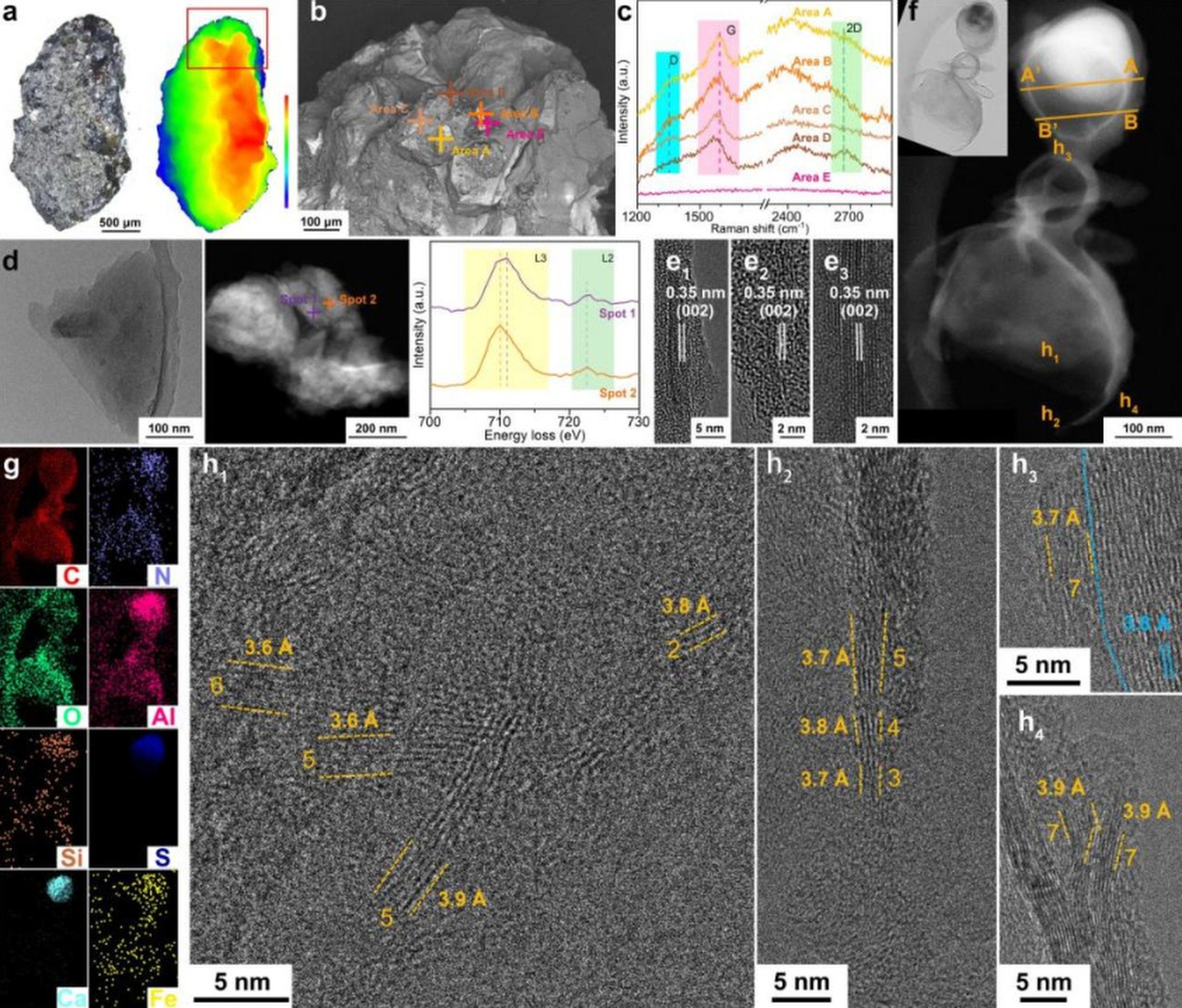To understand the origins of this carbon, the Chinese research team said a study of young lunar samples – just 2 billion years old – could help them unravel “the crystalline structure of the native carbon” present on the moon.
After analyzing the graphene found in the sample, the researchers concluded that the moon may have a process of carbon absorption on its surface that could explain its presence.
The team, which included scientists from Shenyang National Laboratory for Materials Science and China’s Deep Space Exploration Laboratory, said the findings could “reinvent the understanding of chemical components… and the history of the moon.”
Graphene is a carbon allotrope consisting of a single layer of atoms arranged on a hexagonal lattice nanostructure to form the thinnest and strongest material on earth.
In 2010, NASA researchers found graphite – a mineral made up of stacked layers of graphene – in lunar samples collected nearly 40 years earlier by the Apollo 17 mission. After ruling out the effects of solar wind, they attributed the finding to the impact of meteor impacts on the moon.
The Chinese scientists recognized that the impact of meteorites could also lead to the formation of graphitic carbon, as suggested by the NASA researchers.
“Further in-depth investigation of the properties of natural graphene would provide more information about the geological evolution of the moon,” the Chinese team wrote.
According to the Chinese scientists, their study – which used a variety of characterization techniques – is the “first… to verify the presence of natural graphene in lunar soil samples by examining its microstructure and composition.”
Graphene “plays an increasingly important role in wide-ranging fields, including planetary and space science,” they wrote.
And because graphene can be artificially prepared using different techniques that yield different properties, studying the structure of natural graphene can provide insight into the process that led to its formation, the researchers said.
The team used Raman spectroscopy – a chemical analysis technique that can determine the structure and crystallinity of samples – along with other microscopy techniques to analyze a lunar soil sample measuring approximately 2.9 x 1.6 mm (0.1 x 0.06 in). study.

The sample, retrieved in 2020 by the Chang’e-5 mission, is relatively young, 2 billion years old, and comes from a volcanic region on the near side of the moon that “has not been heavily affected by human intervention” , the newspaper said.
According to the researchers, graphene was found in the form of individual flakes, but also as part of a ‘carbon shell’ that encloses elements such as sodium, magnesium, aluminum, silicon, calcium, tin and iron.
“Further examination under high magnification confirms that the graphitic carbon detected by Raman spectra consists of single-layer graphene,” they said.
Iron found in the sample was only present in areas that also contained carbon, suggesting it played a role in the graphitization of carbon as a catalyst for carbon-rich precursor materials, they added.
The structure of graphene suggests that it was formed as a result of “high-temperature processes resulting from volcanic eruptions,” potentially allowing the ferruginous lunar soil to interact with carbon-bearing gas molecules in the solar wind, leading to mineral catalysis.
“Importantly, this mechanism indicates the presence of a carbon capture process on the Moon, which could lead to the gradual accumulation of native carbon,” the team said.
According to the researchers, the findings could also shed light on how to develop cheap and scalable synthesis techniques for making high-quality graphene.
